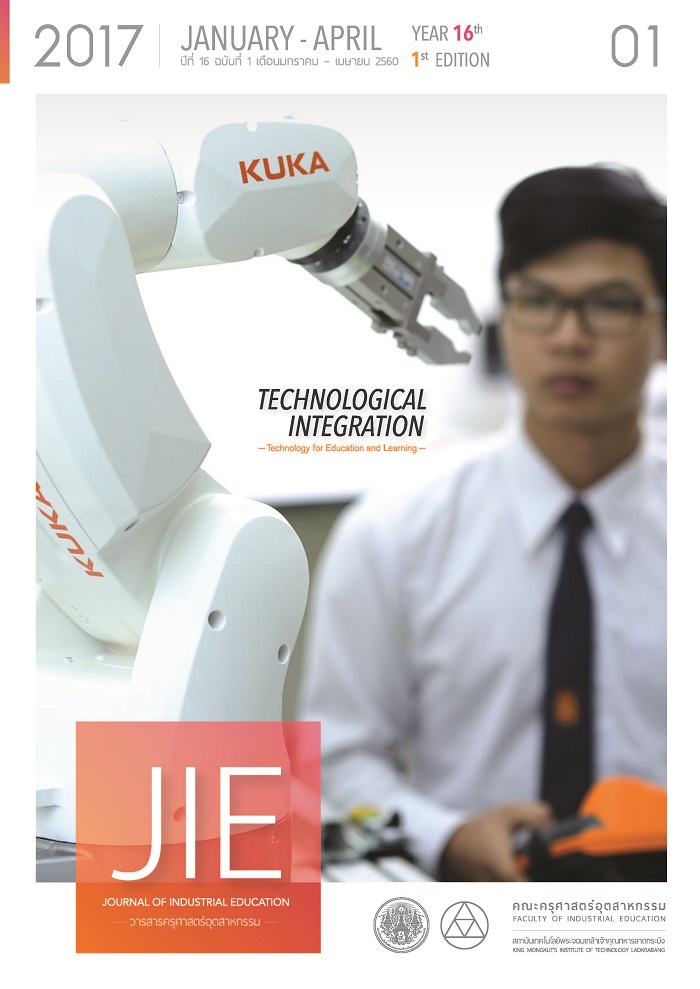THE DEVELOPMENT OF HAND WOVEN SILK PATTERNS FOR MACHINE WASHING:A CASE STUDY OF NONG BUA DAENG NATURAL DYE WEAVING GROUP
Keywords:
Mud Mee Silk, Machine Washing, Natural Dye, Fabric Pattern Design, Quality TestAbstract
The aims of this research are (1) to develop the hand woven silk patterns for washing machine, (2) create a participatory learning approach of how to design silk patterns and surfaces, and (3) to set natural dye standards for Nong Bua Daeng Natural Dye Weaving Group. The results of setting up the natural dye standards were that the dyeing colors consisted of six different colors abstracted from lac, stephania, pterocarpus tree skin, ma phut, ebony tree and annatto tree. The textile tests were to find durability of colors against light, machine washing and sweats. The results reveal that the majority of the samples rated in 4 - 4.5 out of 5. This means that some changes might occur representing the quality of natural dyeing process conducted by the group. In terms of the participatory learning approach of how to design silk patterns, the evaluation results were quite satisfied ( = 4.26). The results of pattern designs and weaving techniques based on defining the group’s target including the current clients and the group’s specific requirements, are four color groups of hand woven silk patterns in which emphasized by Mud Mee pattern as a mian pattern in order to receive strong fabric structure. In addition, the hand woven silk model fabrics was sampled to wash using a standard front door washing machine certified the Thai Industrial Standard 121. The results reveal that the hand woven fabric samples were durable of machine washing. The weaving structure is plain woven, the silk thread was hand pulled using the self-twisting spinner. The sizes of the warp and the woof are almost the same of 146.6/147.4 Denier, respectively. The number of silk strands of both the warp and the woof is different at 5.3/0.5 strand per inch. The contraction of fabric tested in washing bag was revealed to be few of -0.95% and -0.81% (the warp and the woof).
References
[2] Kritsanaphon, W. 2003. Sustainable Design. Bangkok: OS Printing House.
[3] Chanasda, C. 2010. A study of lao thurng tribe’s handicraft textile for development of contemporary products design. Doctor of Philosophy (Products Design), Ubonratchathani University.
[4] Boonchom, S. 2000. Preliminary Research. Bangkok: Suwiriyasat.
[5] Pantone World Headquarters. 2015. Find a PANTONE Color. Retrieved June 16, 2012, from https://www.pantone.com/color-finder
[6] Udale, J. 2008. Textiles and Fashion. Switzerland: AVA Publishing SA.
[7] Thitsana K. 2013. Cippa Model Learning Principles. Retrieved July 20, 2013, from https://www.myfirstbrain.com/teacher_view.aspx?ID=88655
[8] Anuchit C., et al. 2004. Denchai Silk-Reeling Research and Development. Research Report. The Queen Sirikit Department of Sericulture. Retrieved July 20, 2013, from www.gsds.go.th
Downloads
Published
How to Cite
Issue
Section
License
"The opinions and contents including the words in papers are responsibility by the authors."
"ข้อคิดเห็น เนื้อหา รวมทั้งการใช้ภาษาในบทความถือเป็นความรับผิดชอบของผู้เขียน"



